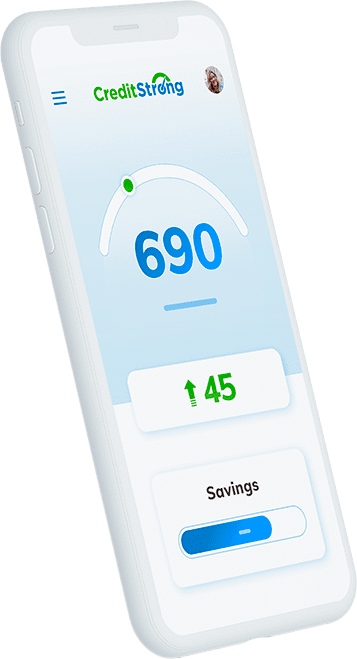What is an Auto Credit Score?

Build strong credit
while you save

Whenever you apply for a new credit account, most lenders check one of your credit scores and use it to assess how likely you’d be to pay them back. FICO Score 8 is the most popular choice for many kinds of loans.
However, when you apply for a car loan, lenders often check your auto credit score instead. Here’s what you should know about it, including how it differs from other credit scores, what counts as a good one, and how to get a copy of yours.
What Is an Auto Credit Score?
An auto credit score helps auto lenders determine how likely a borrower is to pay back a car loan. The credit scoring model is slightly altered from more generic versions to make it more accurate for car financing specifically.
In general, that means the auto-scoring algorithm places a greater emphasis on behaviors relevant to auto loans. For example, having the following on your credit report would be a red flag to all lenders, but especially to auto lenders:
- Defaulting on a previous auto loan.
- Missed payments on other installment debt, such as a personal loan.
- Carrying installment debt with a high, fixed monthly payment, such as a student loan.
Conversely, auto lenders might be less concerned about your credit history with revolving accounts, like credit cards. If you’ve never had one before, that would be a more significant issue to a credit card company than an auto lender.
Of the two major credit score providers, Fair Isaac Corporation (FICO) and VantageScore, only FICO has created industry-specific scores for auto lenders. They’ve released four versions so far: FICO Auto Scores 2, 4, 5, and 8.
What Is a Good Auto Credit Score?
Most modern consumer credit scores range from 300 to 850, including two of the most popular generic scores: FICO Score 8 and VantageScore 3.0. In these cases, good scores generally begin somewhere around the high 600s to low 700s.
For context, FICO officially labels anything above 670 as “Good”, and the average FICO Score 8 in 2021 was 716. If your generic credit score is higher than that, most lenders will consider you a generally trustworthy borrower and be willing to work with you.
Industry-specific scores, like auto credit scores, don’t follow those same scoring ranges. That can skew the numbers somewhat. FICO’s Auto and Bankcard scores for auto loans and credit cards respectively range from 250 to 900.
Unfortunately, since lenders tend to use them less often, there’s significantly less data on industry-specific scores than the more generic versions. As a result, it’s harder to determine the average auto credit score.
That said, there’s only a 100-point difference between the two ranges. It’s safe to estimate that good auto credit scores begin somewhere around the high 700s to the low 800s.
Keep in mind that while there are numerical differences between your generic and auto credit scores, they’ll still correlate with each other.
For example, say you have an excellent credit score under the FICO Score 8 model. You might have a slightly lower credit score under the FICO Auto Score 4, but it will never be a bad score.
There will always be some variation between the two due to the differences in their respective credit scoring algorithms, but everything that benefits one will benefit the other, and vice versa.
If you do have a low credit score, you can still get a car loan. However, you’ll have a much less favorable interest rate than you could get with a higher credit score.
It’s often worth waiting to apply until you have at least an average credit score so you have a chance at the lower auto loan rates.
Differences Between Auto Scores and Other Credit Scores
Credit scores like your FICO Score 8 or VantageScore 3.0 predict how likely you are to pay back your debts in general. They could apply to any installment or revolving debt accounts, including auto loans, credit cards, and mortgages.
Conversely, auto credit scores are specifically designed to assess the likelihood that you’ll pay back a prospective car loan. They don’t apply to other kinds of credit accounts.
To calculate your auto credit scores, FICO alters its generic algorithm to place a greater emphasis on aspects of your credit profile that are relevant to auto loans, such as your previous use of auto loans and installment debt.
The other notable difference is that industry-specific FICO credit scores range from 250 to 900, while generic scores range from 300 to 850.
That said, your auto scores have more commonalities with other credit scores than they do differences. Everything you do with your credit accounts will move them all in the same direction, just to different degrees.

How To Get Your Auto Credit Score
Thanks to online credit monitoring services like Credit Karma and Credit Sesame, obtaining your generic credit score is easier and more affordable than ever. You can get copies of your FICO Score 8 or VantageScore 3.0 from many different providers for free.
Unfortunately, getting your auto credit score can be a bit harder. Because generic scores are generally the most popular among lenders, there’s less demand for consumer access to industry-specific scores like auto credit scores.
As a result, you’re probably going to have to open your wallet to get access to them. FICO offers two different payment options:
- One-time payment: For $19.95, you can get all your FICO scores, including your auto credit scores, based on the credit report from a single credit bureau. If you want copies based on all three bureau reports, it’ll cost you $59.85.
- Monthly subscription: If you’d prefer ongoing access to your auto scores, you can pay $19.95 per month and get copies based on your Experian report every month. For $29.95, you get access to your scores according to all three reports, with updates every three months. To get all three sets of scores with updates every month, you need to pay $39.95.
But before you buy your auto credit scores, ask your prospective auto lender whether or not they use them. Even if they do, you can probably get away with gauging your chances using your generic scores. Remember, they strongly correlate with each other.
How to Improve Your Credit Score
If you have a bad credit score, it’s best to start working on improving it as soon as possible. Credit repair takes time, and you don’t want to be stuck trying to raise your score days or weeks before you need a new auto loan, credit card, or mortgage.
Fortunately, building a good credit score is relatively simple when you have time to spare. All you need to do is demonstrate responsibility with a diverse set of credit accounts.
The most impactful steps you can take are the following:
- Expand your credit mix: You need to open credit accounts to build credit. It’s best to have both installment and revolving debts. In fact, the diversity of your credit mix is worth 10% of your FICO score.
- Make all your payments on time: The most significant factor in your FICO credit scores is whether or not you pay your debts on time and in full. Your payment history is worth a whopping 35% of your score, so do whatever you can to at least make all your minimum payments.
- Pay down your debt balances: The second most significant factor in your FICO scores, worth 30%, is the amount of debt you owe. Pay down your loans and keep your credit card balance on each account to 10% of its credit limit.
If you can do these three things, your credit score will improve, and you’ll have a better chance of qualifying for a lower interest rate.
That’s particularly important for auto loans since the average auto loan rate for people with bad credit is near or in the double digits.
That said, it can be hard to implement this strategy when you have bad credit since lenders might not be willing to approve you for a loan or credit card in the first place.
Fortunately, you can open some accounts with a poor credit score. One of the best options available is a credit builder loan like CreditStrong’s.
It works like a typical installment loan, but we use your proceeds as collateral to secure the loan.
The payments you make will be reported to all the major credit bureaus and build your credit. We’ll keep the loan amount in a locked savings account until you reach the end of your loan term or cancel the account. Then, that amount will be released to you.
As a result, we don’t need to check your credit when you apply, and you can start building credit even if you have a bad score. Give it a try today!
CreditStrong helps improve your credit and can positively impact the factors that determine 90% of your FICO score.
